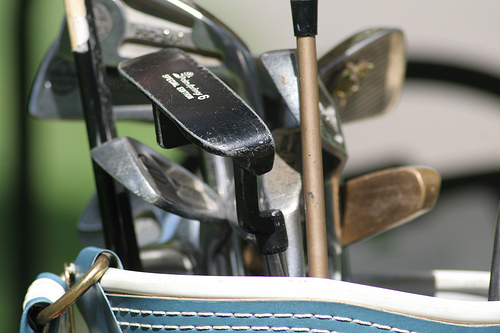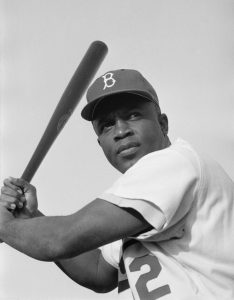Adam Scott leans back and raises his arms in excitement. One hand is grasping his long putter and the other in a vice grip while closing his eyes and expressing a deafening shout. He just sank a 12-foot birdie putt in a playoff to win the 2013 Masters, the long-awaited first major tournament victory for the highly touted golfer.
However, it was bittersweet for the Aussie. About a month after his win, golf’s governing bodies approved a rule that would abolish the anchored putting stroke, a method Scott uses, that would take effect Jan. 1, 2016. It might possibly deliver a major blow to Scott’s career and others who utilize the technique.
The anchored stroke is where the end of the putter or the hand gripping it is intentionally secured to the body, creating a hinge effect when making a putting stroke. The United States Golf Association (USGA) believes it’s a “substantial” difference compared to the traditional style of putting where the club or the hand isn’t attached to the torso, creating a free swing of the putter.
Long and belly putters, which are the clubs used to create the anchored stroke, have been a part of golf for over 40 years. In 1991, Rocco Mediate became the first player to win a PGA event with a putter anchored to his body. It became a debated topic, however, when an influx of junior golfers and young professionals ditched the conventional putter and adopted the method. The issue gained steam in 2011 when Keegan Bradley won the PGA Championship, becoming the first player to win a major tournament using a non-traditional putter.
USGA executive director Mike Davis didn’t believe anchored putting was worthy of banishment saying the anchored stroke isn’t “detrimental” to the game, but his stance started to slowly change after the outcome of the 2011 PGA Championship.
“To date there’s no evidence they [long and belly putters] are giving anybody an undue advantage,” Davis said after Bradley’s win in a golfchannel.com report. “But could we become concerned some day? The answer is, yes.”
A month later, Bill Haas won the last tournament of the season, the Tour Championship, using a belly putter. The win also catapulted him atop the FedEx Cup points list which earned him over $11 million over that weekend. The following year, two more belly-putter users won major tournaments. Webb Simpson won the U.S. Open, and Ernie Els won the Open Championship with Scott finishing runner-up. Three months later, golf organizations proposed to have the technique banned.
USGA President Glen Nager is in favor of the ruling because of its mechanical advantages. “Anchoring creates potential advantages, such as making the stroke simpler and more repeatable, restricting the movement and rotation of the hands, arms and clubface, creating a fixed pivot point, and creating extra support and stability that may diminish the effects of nerves and pressure,” Nager said, according to a PGAtour.com report.
Nerves are a big challenge of the game, and using the anchored technique is a solution to better control them. Players’ overwhelming nerves and pressure over putts may cause them to have the “yips,” which is golf vernacular for players’ nervous affliction when putting that inhibits them to make an ideal putting stroke. If you see a golfer miss a makeable, short putt, it’s either because of a misread or the “yips.”
This is one of the reasons why players, like Scott, adopt the anchoring technique to bring consistency in the putting stroke and counteract those hindrances. In 2010, the last full year Scott used a traditional stroke, he finished 186th on the PGA Tour in strokes- gained putting. Currently in his third year into his transition to anchoring, he ranks 13th in that same category.
So, the argument is whether those who use an anchored stroke face the same challenges as a player with a traditional stroke. Fourteen-time major winner Tiger Woods thinks they don’t. Woods believes the motion made with an anchored putter isn’t considered a putting stroke. Before the ruling was finalized, he was in contact with golf’s organizers for years to tackle the issue. As a purist, he strongly believes the art of putting is controlling the nerves and swinging the club, according to an ESPN.com report.
“[It’s] something that’s not in the traditions of the game,” Woods said. “We swing all other 13 clubs. I think the putter should be the same. It should be a swinging motion throughout the bag.”
Golf Hall-of-Famer and two-time Masters winner Bernhard Langer believes golf’s organizers made a rushed decision to try and ban the technique due to the string of anchored users winning majors over the last three years. He wondered why the putters weren’t considered illegal decades ago when the putters were first used.
“I don’t understand that they’ve been used for 20, 30 years, and only now they say ‘we think they’re illegal,’” Langer said, according to a golfnewsnet.com story. “So for three decades, nobody won a major with one. And now because three have, they’re illegal? I’m sorry, don’t accept the argument whatsoever.”
Despite Langer’s remarks, there’s a consensus among players who are in favor or don’t care for the ruling, likely because the majority of players use a traditional putter. Yet, Billy Rosinia, who has played in two PGA events and two major tournaments on the senior PGA circuit, is one who uses a short putter but disagrees with the ban.
“I really don’t think that it’s that much of an advantage or else everybody would be doing it,” Rosinia said.
He also said that the ruling is an injustice towards the junior golfers who grew up playing with the method, and the touring professionals who invested years practicing the technique and making a living with it.
Tim Clark, winner of the 2010 Players Championship, is one of them. He’s been anchoring the long putter since he turned pro in 1998. A congenital problem with his arms that causes discomfort when holding a shorter putter closer to his body was the reason why he switched putters in college, and he never turned back. Now, the ruling puts the remainder of his golf career in question.
“I planned to play until I physically no longer could play,” he said. “Now it’s a case of I’ve been told ‘no, hang on, that might change. You’re going to change the way you putt in a few years’ time,’ and now my future is uncertain.”
Clark is irked by the notion that long and belly putters don’t constitute a stroke believing it’s a different variation of one. Also, he argues that it doesn’t diminish nervousness because he, like all players, misses putts under pressure. He sees no advantage within the method. “If I felt I was cheating, I wouldn’t be using it,” Clark said in a PGA.com report.
As of Monday, only two anchored users, Adam Scott and Webb Simpson, rank within the top 30 in strokes-gained putting. Carl Petterson currently ranks 137th, Kevin Stadler is at a meager 162nd, and Clark is 88th, which compromises his argument that anchored putters don’t elevate their play on the course.
It comes full circle to Rosinia’s disagreement that anchored putters give an advantage to players.
“You still have to putt the ball in the hole,” he said.








Be First to Comment